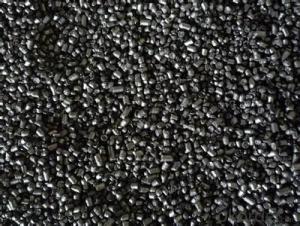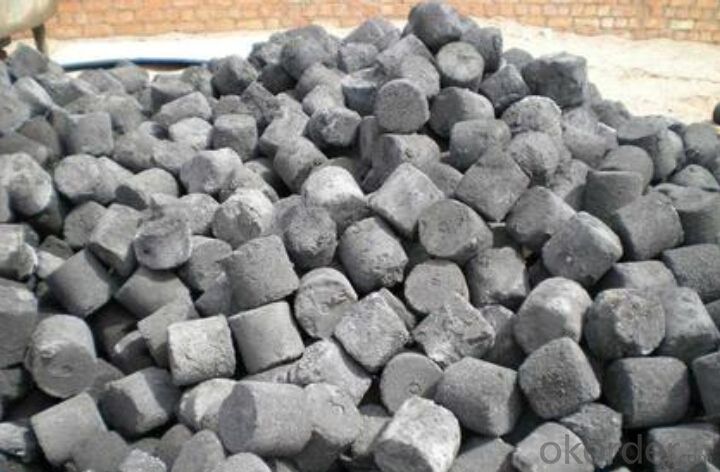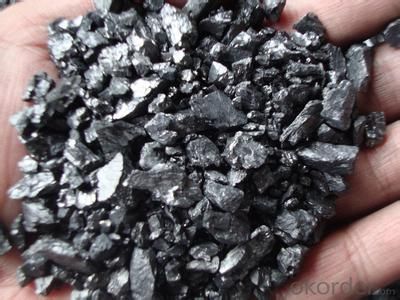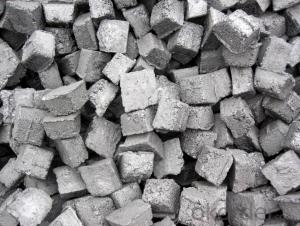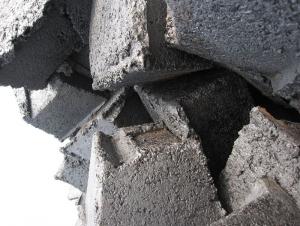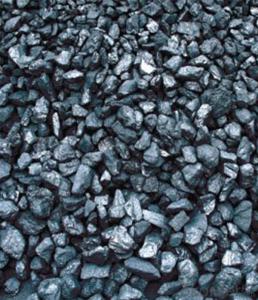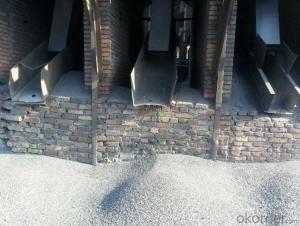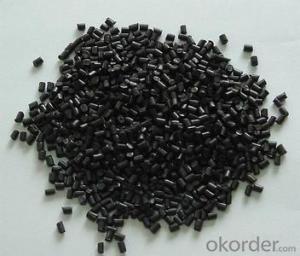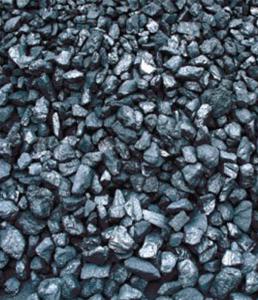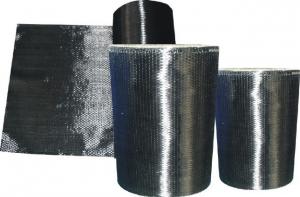Carburant for grey iron casting and steel casting
- Loading Port:
- Qingdao
- Payment Terms:
- TT OR LC
- Min Order Qty:
- 10 m.t.
- Supply Capability:
- 50000 m.t./month
OKorder Service Pledge
OKorder Financial Service
You Might Also Like
Specifications of Carburant:
- Size: 0-1mm, 0.5-1.5mm, 1-3mm, 0-5mm, 1-5mm, 3-5mm, 3-8mm
- Application: grey iron casting and steel casting
Carburant for grey iron casting and steel casting:
- Carburant: this product is exclusively used in grey iron casting and steel casting.
- Features: Pure chemical composition; high carbon, low sulfur and micro nitrogen, less impurity.
- Physique: Clean appearance without impurities, fast absorption rate and high absorptivity.
- Micro morphology: good crystal quality and improve the performance and specification of casting
- Stable property: stable carburetion effect, good absorption effect and Increase melt temperature distinctly without back slag.
Data Sheet:
Type | Fixed Carbon | Sulfur | Moisture | Volatile | Graininess |
≥ | ≤ | ≤ | ≤ | 90% | |
Carb-98 | 98.50% | 0.50-0.03% | 0.50% | 0.50% | Custom |
Carb-93 | 93.00% | 0.50-0.30% | 0.50% | 0.50% | Custom |
Carb-88 | 88.00% | 0.80-1.50% | 3.50% | 1.50% | Custom |
Carb-92 | 92.00% | 0.50-0.38% | 0.50% | 3.00% | Custom |
Size and packing:
- Size:
Grade A: 0-1mm,0.5-1.5mm etc.
Grade B: 1-3mm,0-5mm,1-5mm,3-5mm,3-8mm etc.
- Applications
Due to different melting technology and equipment, grade A is applicable to iron liquid carburetion with flow before the furnace and later supplementary carbon in the furnace. grade B is applicable to carburant in the Induction Furnace .grade c is only applicable to converter steelmaking.
- The grain size can be made according to the requirement of the customers.
- packaging
25kg/bag Waterproof woven bag
25kg/bag double paper bags
50kg/bag woven bag
1000kg/bag ton bag
If you have special instruction please contact with us.
Storage:
Please keep the storage clean and dry, prevent moisture and dirty.
Quality guarantee and technical support
- Provide the quality certificate with the goods including: company name, address, product name, date of manufacture type and model, result of test.
- Ensure to offer on-site technical service and support.
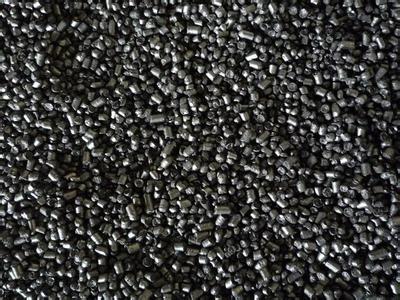
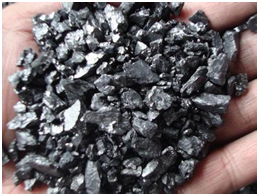
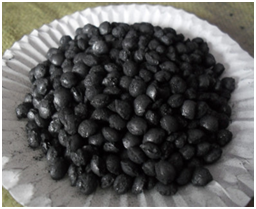
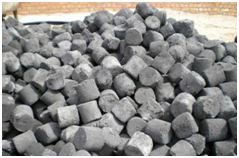
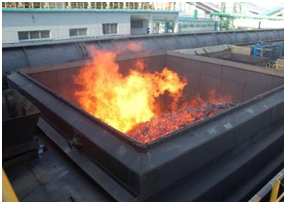
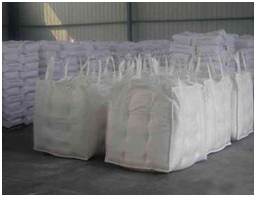
- Q: What are the impacts of carbon emissions on urban environments?
- Urban environments are significantly affected by carbon emissions, with air pollution being one of the most notable consequences. The release of carbon dioxide and other greenhouse gases from vehicles, factories, and power plants contributes to the formation of smog and harmful particulate matter in cities. This pollution poses serious health risks to residents, especially those with respiratory conditions, and can result in increased hospital admissions and premature deaths. In addition, carbon emissions contribute to climate change, which has wide-ranging implications for urban areas. Rising temperatures and changing weather patterns can intensify heatwaves, leading to an increase in heat-related illnesses and fatalities. The frequency and severity of extreme weather events, such as hurricanes and floods, can cause significant damage to infrastructure and disrupt essential services like water supply and transportation. Furthermore, coastal cities face the threat of rising sea levels as a result of carbon emissions. The melting of polar ice caps and the expansion of seawater contribute to flooding and erosion, particularly in these areas. This can lead to the loss of valuable land, displacement of populations, and damage to critical infrastructure such as buildings, roads, and sewage systems. Additionally, carbon emissions contribute to the urban heat island effect, whereby cities experience higher temperatures compared to surrounding rural areas. This is due to the absorption and retention of heat by urban materials like concrete and asphalt. The urban heat island effect can worsen the health risks associated with heatwaves and increase the demand for cooling, thus furthering carbon emissions. Lastly, carbon emissions have economic ramifications for urban environments. The costs of mitigating and adapting to climate change effects, such as implementing climate-resilient infrastructure and disaster response measures, can be substantial. Additionally, air pollution and extreme weather events can result in increased healthcare expenses and productivity losses. To address these impacts, it is crucial to reduce carbon emissions by transitioning to cleaner energy sources, promoting sustainable transportation options, and implementing energy-efficient practices in buildings. Urban planning and design should also prioritize the creation of green spaces, tree planting, and the use of reflective and permeable materials to combat the urban heat island effect. By tackling carbon emissions in urban environments, we can create healthier and more resilient cities for present and future generations.
- Q: Iron and steel are different in terms of carbon content
- Stainless steel is usually divided according to the structure of the organization, can be divided into austenite, ferrite, martensite and other major categories. If you go into the molten steel of different proportion of Cr Ni austenitic steel, tempered magnet is not stainless steel; if the chromium nickel steel and a small amount to in (or without nickel), tempered steel is a magnet on the stainless steel, also called ferritic stainless steel; martensitic stainless steel alloy the element is chromium, iron and carbon. Stainless steel because of the different alloy content, there are more than 100 kinds. In addition to the austenitic stainless steel magnet not on ferrite and martensitic stainless steel are magnetic. Nickel is scarce in the world and expensive. Therefore, the high nickel content of stainless steel in the market price is higher, but the magnet still can not suck. In fact, there is also a stainless steel magnet can not be sucked.
- Q: How does carbon impact the stability of savannah ecosystems?
- The stability of savannah ecosystems relies heavily on carbon, which is crucial for all living organisms and involved in various ecological processes. Carbon exists primarily in the form of organic matter, which is vital for the growth and development of plants, the primary producers in these ecosystems. In savannahs, carbon affects stability in multiple ways. Firstly, carbon dioxide (CO2) plays a significant role in regulating the global climate as a key component of the Earth's atmosphere. Savannahs have the ability to sequester and store large amounts of carbon in their vegetation and soils, thereby mitigating climate change by reducing CO2 levels in the atmosphere. Carbon is also essential for plant growth through photosynthesis. Savannah plants, like grasses and scattered trees, utilize carbon dioxide from the air to produce carbohydrates and other organic compounds. This process not only provides plants with energy but also contributes to the overall productivity of the ecosystem. The stability of savannah ecosystems is also dependent on the interaction between plants and animals. Carbon-rich vegetation serves as a food source for herbivores, which in turn support predators. The carbon cycle ensures a continuous flow of energy and nutrients throughout the food web, maintaining ecosystem balance and stability. Moreover, the carbon content in savannah soils affects their fertility and ability to retain moisture. Organic matter derived from decaying plant material improves soil structure, nutrient availability, and water holding capacity. This, in turn, supports vegetation growth and sustains the diverse array of species found in savannah ecosystems. However, human activities such as deforestation, agricultural practices, and the burning of fossil fuels are disrupting the carbon balance in savannahs. Deforestation removes carbon-rich trees and plants, reducing the overall carbon storage capacity of the ecosystem. Additionally, the release of carbon dioxide from burning fossil fuels contributes to the greenhouse effect and climate change, which can disrupt savannah ecosystem stability. In conclusion, carbon plays a critical role in maintaining the stability of savannah ecosystems. It influences climate regulation, supports plant growth, provides energy for the food web, and enhances soil fertility. However, human activities that disrupt the carbon balance in these ecosystems can have detrimental effects on their stability and overall health. Therefore, it is essential to conserve and restore savannah ecosystems to preserve their carbon storage capacity and ensure long-term stability.
- Q: What are the consequences of increased carbon emissions on human migration patterns?
- Human migration patterns are significantly affected by the increase in carbon emissions. One of the most notable outcomes is the worsening of climate change, resulting in more frequent and severe natural disasters like hurricanes, floods, and droughts. These extreme weather events can cause immense damage to communities, infrastructure, and livelihoods, compelling people to move in search of safer and more stable environments. The rise in sea levels, which is another consequence of carbon emissions, poses a substantial threat to coastal regions and island nations. As sea levels continue to climb, low-lying areas become increasingly vulnerable to flooding and coastal erosion, rendering them uninhabitable. This displacement of populations, commonly known as climate refugees, can lead to large-scale migrations, placing additional strain on resources and infrastructure in the receiving areas. Furthermore, carbon emissions contribute to shifts in temperature and precipitation patterns, which can have a profound impact on agricultural activities. Changes in growing seasons, more frequent droughts or floods, and the proliferation of pests and diseases can all negatively affect crop yields and food security. This disruption in the availability of food and resources can compel vulnerable populations to migrate in search of better livelihoods and food sources. The consequences of increased carbon emissions on human migration patterns also extend to health issues. Climate change can facilitate the spread of diseases like malaria and dengue fever, as well as exacerbate air pollution, worsening respiratory problems. These health risks can necessitate the relocation of individuals and communities to areas with better healthcare infrastructure and conditions. To sum up, the increase in carbon emissions has far-reaching effects on human migration patterns. The exacerbation of climate change, rising sea levels, disruptions to agriculture, and health risks all contribute to the displacement of populations, creating a need for individuals and communities to seek safer and more stable environments. It is crucial to address carbon emissions and mitigate climate change in order to minimize the adverse impacts on human migration and ensure a sustainable future.
- Q: How does carbon affect the formation of landslides?
- Carbon does not directly affect the formation of landslides. Landslides are primarily triggered by natural factors such as heavy rainfall, earthquakes, or volcanic activity, or by human activities such as deforestation or construction. However, carbon indirectly plays a role in landslides through its impact on the environment. Excessive carbon dioxide (CO2) emissions, primarily caused by human activities such as burning fossil fuels and deforestation, contribute to climate change. Climate change leads to more frequent and intense rainfall events, which can increase the likelihood of landslides. Increased rainfall can saturate the soil, making it heavier and more prone to sliding, especially on steep slopes. Another way carbon can indirectly affect landslides is through deforestation. Trees play a crucial role in stabilizing slopes by anchoring the soil with their root systems. When forests are cleared for agriculture, urbanization, or logging, the loss of tree cover weakens the soil's stability and increases the risk of landslides. Additionally, the removal of vegetation reduces the absorption of rainfall, leading to increased surface runoff and erosion, further destabilizing slopes and making them more susceptible to landslides. In conclusion, while carbon itself does not directly cause landslides, its impact on climate change and deforestation can indirectly contribute to the occurrence and severity of landslides. It is important to address carbon emissions and promote sustainable land management practices to mitigate the risk of landslides and maintain the stability of slopes.
- Q: What are the consequences of increased carbon emissions on global food security?
- Increased carbon emissions have significant consequences on global food security. One of the most immediate impacts is the alteration of weather patterns and increased frequency of extreme weather events such as droughts, floods, and heatwaves. These events can lead to crop failures, reduced agricultural productivity, and loss of livestock, ultimately resulting in food shortages and price volatility. Carbon emissions also contribute to climate change, leading to long-term shifts in temperature and precipitation patterns. Higher temperatures can accelerate the growth and reproduction rates of pests and diseases, which can devastate crops and livestock. Additionally, changes in rainfall patterns can disrupt the timing and quantity of water available for irrigation, further reducing agricultural productivity. Furthermore, carbon emissions contribute to the acidification of oceans, which negatively affects marine ecosystems and the livelihoods of communities dependent on fishing and aquaculture. This can lead to a decline in fish stocks, threatening the availability of a vital source of protein and nutrition for millions of people. Another consequence of increased carbon emissions is the loss of biodiversity. Climate change can disrupt ecosystems, leading to the extinction or migration of plant and animal species. This loss of biodiversity reduces the resilience and adaptability of agricultural systems, making them more vulnerable to pests, diseases, and environmental stresses. Ultimately, the consequences of increased carbon emissions on global food security are far-reaching and complex. They include decreased agricultural productivity, increased food prices, food shortages, and reduced access to nutritious food. Addressing carbon emissions and mitigating climate change is crucial to ensure a sustainable and secure global food system for future generations.
- Q: What are the impacts of carbon emissions on the stability of grasslands?
- The stability of grasslands is significantly affected by carbon emissions. When carbon dioxide (CO2) is released into the atmosphere, it contributes to the greenhouse effect and causes global warming. This rise in temperature has various harmful consequences for grasslands. To begin with, higher temperatures can disrupt the equilibrium of grassland ecosystems. Many grassland species require specific temperatures for their growth and reproduction. As temperatures increase, these species may struggle to adapt, resulting in a decline in their populations. This disruption can negatively impact the overall biodiversity and ecological stability of grasslands. Additionally, global warming can change precipitation patterns, leading to alterations in water availability in grasslands. Reduced rainfall or increased evaporation can create drought conditions, making it challenging for grasses to flourish. This can ultimately cause grasslands to transform into barren areas devoid of plant life, a process known as desertification. Moreover, carbon emissions contribute to the acidification of the oceans, which indirectly affects grasslands. Acidic ocean waters impact marine organisms, including those responsible for generating nutrients that are carried by winds to coastal and inland grasslands. If these nutrient sources decline, grasslands may experience reduced fertility and productivity, ultimately affecting the stability of these ecosystems. Lastly, carbon emissions can worsen the frequency and intensity of wildfires. Grasslands are naturally adapted to periodic fires, which play a vital role in maintaining biodiversity and regulating plant populations. However, the increase in carbon dioxide levels can fuel more severe and frequent wildfires, leading to the destruction of grasslands and making their recovery more challenging. In conclusion, carbon emissions have numerous negative impacts on grassland stability. They disrupt the balance of grassland ecosystems, change precipitation patterns, contribute to ocean acidification, and increase the risk of wildfires. These effects can result in biodiversity loss, desertification, reduced fertility, and overall instability in grassland ecosystems. It is essential to reduce carbon emissions and mitigate the consequences of global warming to ensure the long-term stability and preservation of grasslands.
- Q: What should I do when carbon monoxide leaks?
- Be careful not to let their affected by the cold, otherwise, may make the body temperature decreased cardiac arrest. If the poisoned person can drink, can feed the hot tea and sugar, to keep warm, cold towel head can not be used, but can not pour cold water. Poisoning breathing difficulties or just stop breathing, artificial respiration should be immediately closed chest cardiac massage or first aid, and to call the ambulance the unit, or ask the neighbors to help, send the patient to the hospital for treatment.
- Q: How does carbon dioxide affect the pH of soil?
- Carbon dioxide can affect the pH of soil through a process called carbonation. When carbon dioxide dissolves in water, it forms carbonic acid (H2CO3), which is a weak acid. When this acid is present in soil, it can react with certain minerals and compounds, such as limestone or calcium carbonate, found in the soil, resulting in their dissolution. This process releases positively charged ions, such as calcium (Ca2+) or magnesium (Mg2+), into the soil solution, which can increase the soil's alkalinity or raise the pH. Additionally, the presence of carbonic acid can also increase the availability of certain nutrients in the soil. For example, it can enhance the solubility of phosphorus, making it more accessible for plants to uptake. This can lead to an increase in soil fertility. However, it is important to note that the effect of carbon dioxide on soil pH can vary depending on different factors, such as the concentration of carbon dioxide, soil type, and the presence of buffering agents. In some cases, the buffering capacity of the soil can limit the impact of carbonic acid on pH changes. Therefore, while carbon dioxide can influence soil pH, it is just one factor among many that can affect the overall acidity or alkalinity of soil.
- Q: The main difference between steel and iron is the difference in carbon content
- Steel carbon content is 0.03% ~ 2% of the iron carbon alloy. Carbon steel is the most commonly used ordinary steel smelting, convenient, easy processing, low price, and can satisfy the use requirement in most cases, it is widely used. According to the different carbon content, carbon steel is divided into low carbon steel, medium carbon steel and high carbon steel with the carbon content increased, decreased the hardness, toughness of carbon steel alloy steel. Also called special steel, adding one or more alloying elements in steel on the basis of the change of microstructure and properties of steel, it has some special properties, such as high hardness, high wear resistance, high toughness and corrosion resistance sex, etc.
Send your message to us
Carburant for grey iron casting and steel casting
- Loading Port:
- Qingdao
- Payment Terms:
- TT OR LC
- Min Order Qty:
- 10 m.t.
- Supply Capability:
- 50000 m.t./month
OKorder Service Pledge
OKorder Financial Service
Similar products
Hot products
Hot Searches
Related keywords
